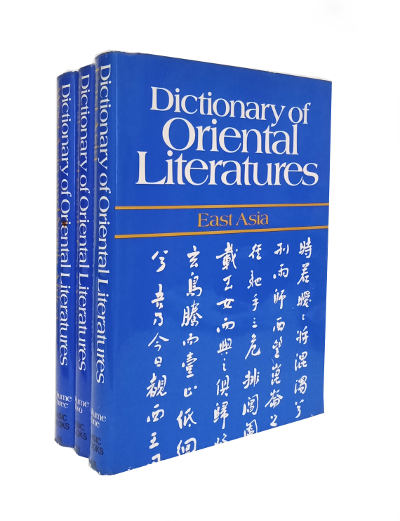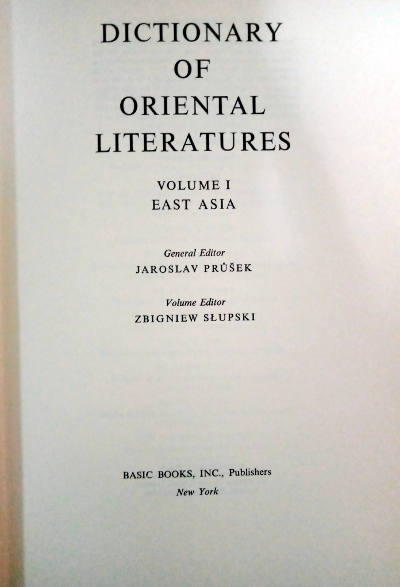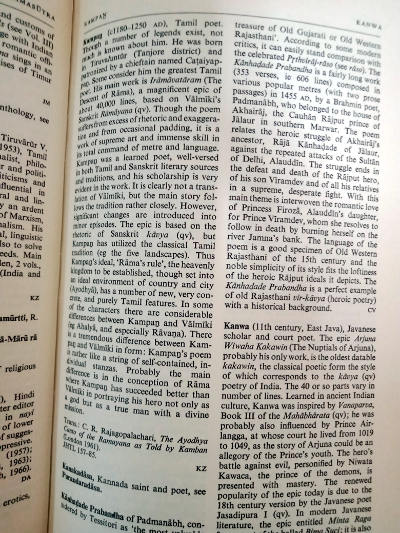About the set (from jacket flap):
The Dictionary of Oriental Literatures fills a long-felt gap in Oriental studies by presenting a concise summary, of practically all the literatures of Asia and North Africa. The first volume describes Chinese, Tibetan, Japanese, Korean and Mongolian literatures; the second covers the area of South and Southeast Asia, comprising, besides all the literatures of India and Pakistan, those of Nepal, Bangladesh, Ceylon, Burma, Thailand, Cambodia, Vietnam, Indonesia, Malaysia and the Philippines; and the third is devoted to the numerous literatures of West Asia and North Africa, including on the one hand the literatures of the ancient Near East and Egypt, and on the other those of the Asian territory of the U.S.S.R., of Turkey, of Iran, Afghanistan and of the various Arab countries including Morocco, Tunisia and Algeria.
The majority of entries give information about the life and work of individual writers and poets of the classical, medieval and modern periods of the literatures included and also attempt to evaluate their writings from the historical and aesthetic point of view. The remaining articles describe literary terms, genres, forms, schools, movements, etc.
The Dictionary has been prepared by the Oriental Institute in Prague under the supervision of an Advisory Editorial Board of European and American scholars of international reputation and is unique in that it is the fruit of the collaboration of over 150 orientalists from many parts of the world.




